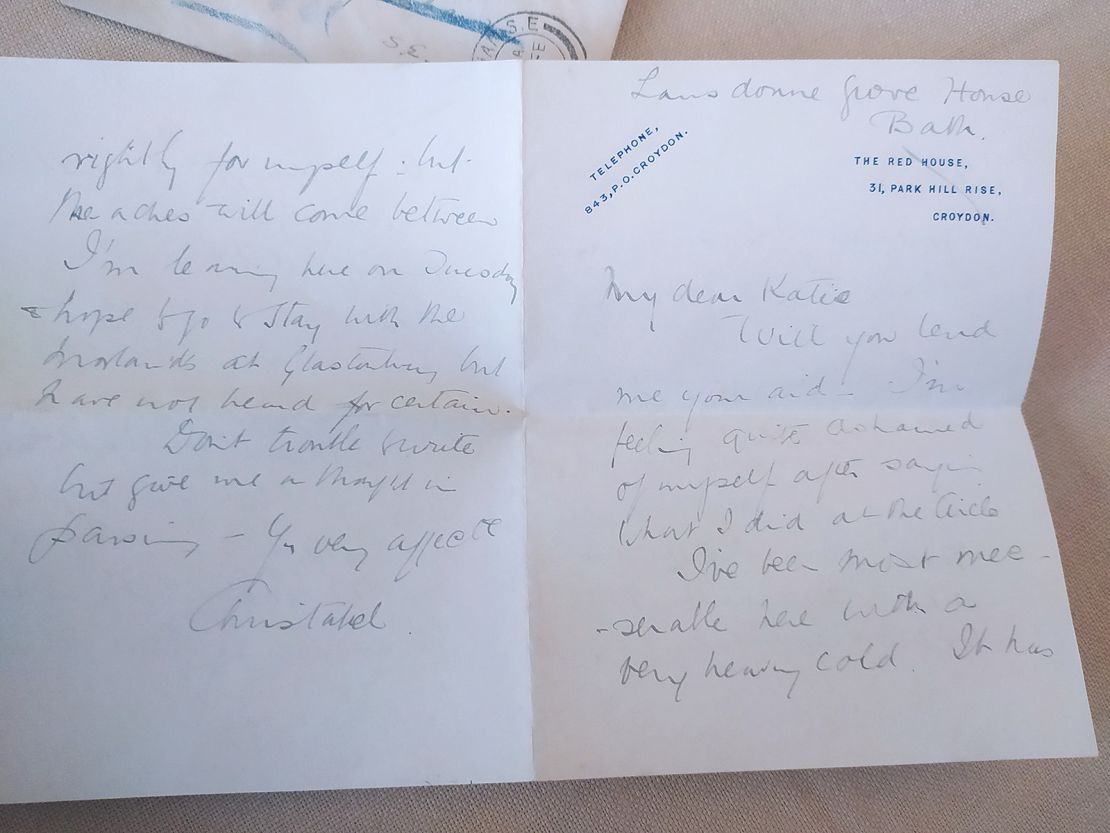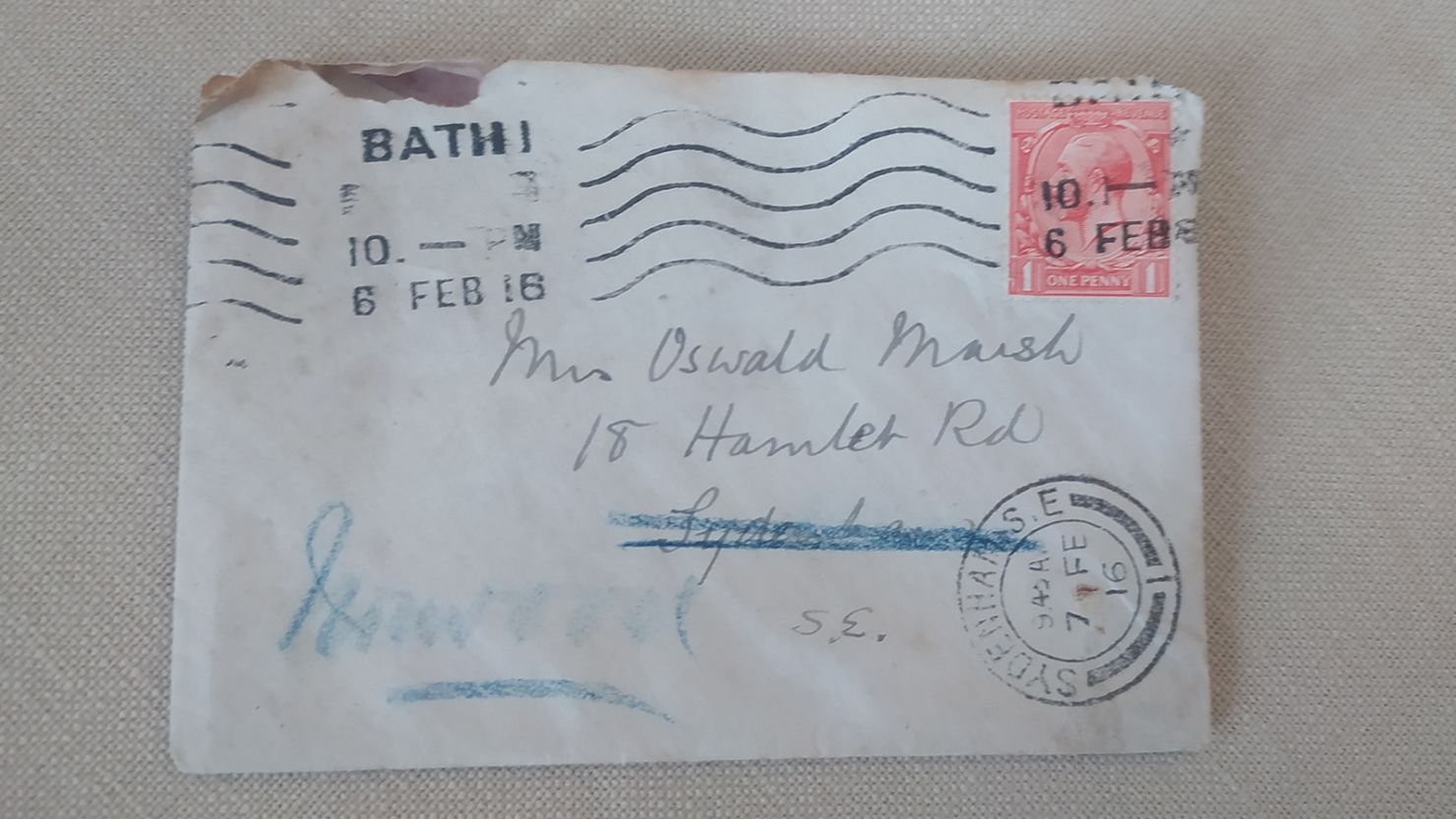A letter has finally been delivered to its destination – more than a century after it was written.
Sent in February 1916, the correspondence arrived at its intended address in Hamlet Road, south London, much to the bewilderment of the current occupants.
“We noticed that the year on it was ’16. So we thought it was 2016,” Finlay Glen told CNN Thursday. “Then we noticed that the stamp was a King rather than a Queen, so we felt that it couldn’t have been 2016.”
Glen told CNN that the letter arrived at the property a couple of years ago, but he has only recently taken it to the local historical society, so they can research it further.
The envelope has a 1 pence stamp bearing the head of King George V. The letter was sent in the middle of World War I – more than a decade before Queen Elizabeth II was born.
“Once we realized it was very old, we felt that it was okay to open up the letter,” said Glen, 27.
Under the Postal Services Act 2000, it is a crime to open mail not addressed to you. But Glen said he can “only apologize” if he’s committed a crime.

After realizing that the letter may be of historical interest, he gave it to the Norwood Review, a local quarterly magazine.
“As a local historian I was amazed and delighted to have the details of the letter passed to me,” said Stephen Oxford, editor of the magazine, in a release.
The letter was addressed to “my dear Katie,” who, according to Oxford, was the wife of local stamp magnate Oswald Marsh.
It was written by Christabel Mennel, the daughter of tea merchant Henry Tuke Mennel, while her family was on holiday in Bath, in western England. In the letter, Mennel writes: “I’ve been most miserable here with a very heavy cold.”
The neighborhood of south London was a hub of business activity at the time. “Lots of wealthy, middle class people moved into the area in the late 1800s,” Oxford told CNN.
Oswald Marsh, the former resident of the Hamlet Road property, “was a highly regarded stamp dealer who was often called as an expert witness in cases of stamp fraud,” according to Oxford.
The Norwood Review is producing a full report on the letter.

Yet it remains a mystery as to how the letter arrived at Glen’s flat.
“Incidents like this happen very occasionally, and we are uncertain what has happened in this incident,” a Royal Mail spokesperson told CNN in a statement Thursday.
“We appreciate that people will be intrigued by the history of this letter from 1916, but have no further information on what might have happened.”
Oxford noted that the letter was postmarked “Sydenham,” an area in southeast London. He thinks it “may well have been lost sitting in a dark corner in the Sydenham sorting office and only recently discovered.”
Glen said he and his girlfriend would be happy to give the letter to a local archive if it’s of “serious historical significance.” But, if it’s found to be more “innocuous,” he said, “it would be nice for us to be able to hold onto it.”
Glen, a theater director and playwright, said that he doesn’t often include strange twists of fate in his plays. But, after this serendipitous delivery, “perhaps the next one will.”

